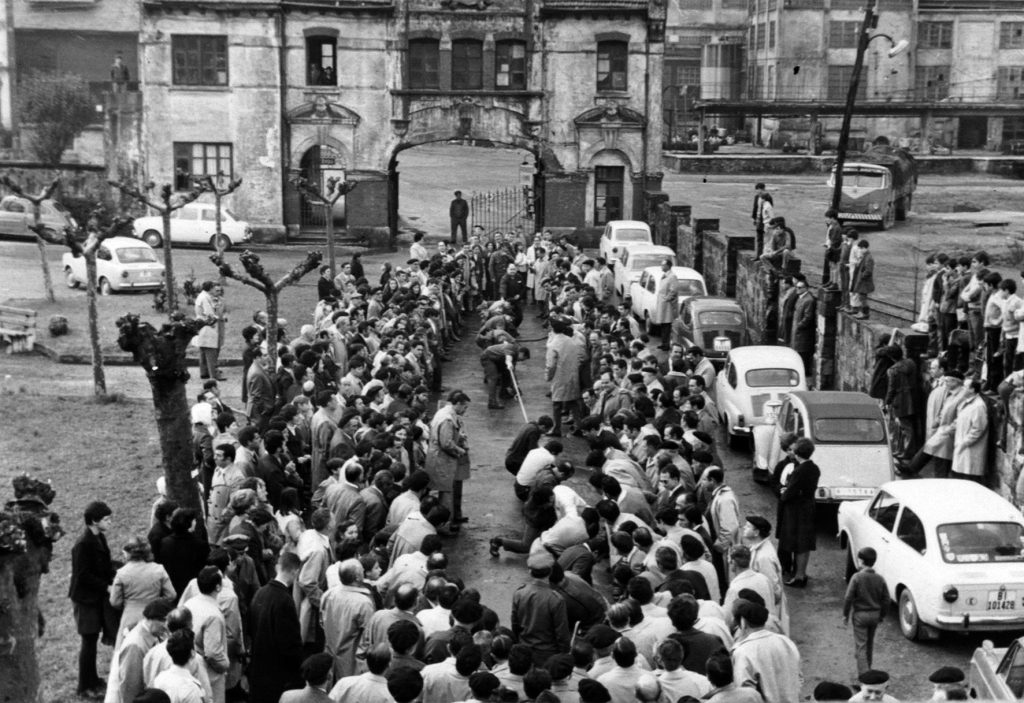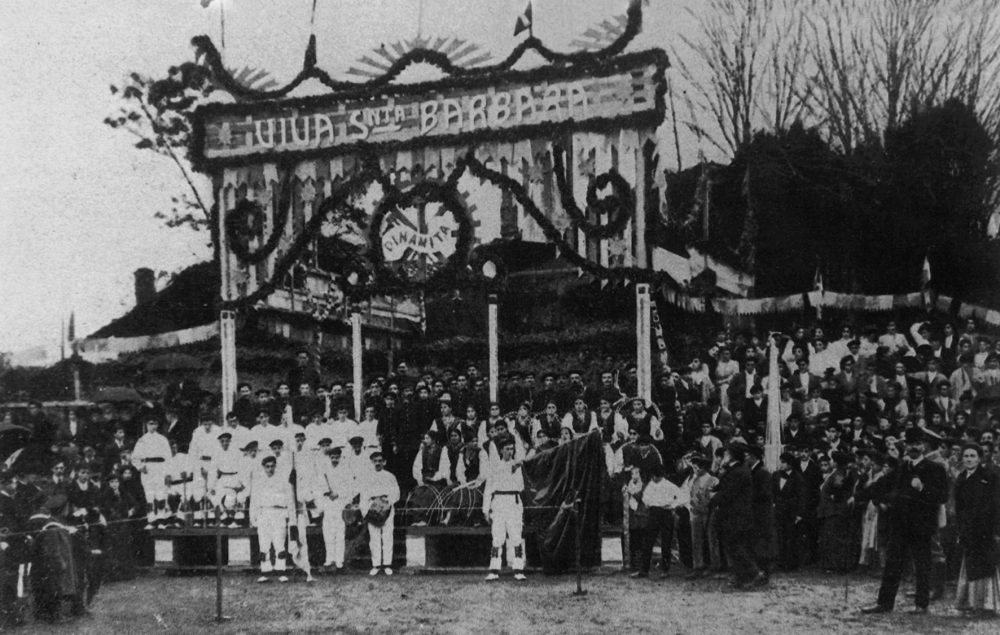
Galdakao (Bizkaia), 1960s. MAXAM Foundation.
The festivity of St Barbara of Nicomedia is celebrated on 4 December. Because of her legendary association with lightning, Barbara is perhaps best known as the patron saint of armourers and dynamiters, miners and quarry workers, electricians, and artillerists. The Catholic Church named her protector against storms, hail and lightning.
It was once a widespread practice to light a candle blessed at Candlemas, on 2 February, while offering an invocation prayer for protection over the house. In Gernika, for instance, this or slight variants of it was said: Santa Bárbara bendita / que en el cielo estás escrita / con papel y agua bendita / en la hora de la cruz / santa muerte amén Jesús. (Blessed Saint Barbara / written in heaven / with paper and holy water / at the hour of the cross / holy death amen Jesus).

Gernika (Bizkaia), 1964. Archive of the Gernikazarra History Group.
The occasion was celebrated with particular devotion and verve in the following two locations in Bizkaia:
Gernika, because there existed an arms factory, popularly known as La Armería [The Armoury], since before the 1936 civil war and until its closure in 1998, where 4 December was annually observed. Part of the enterprise moved to neighbouring Markina after the war.
A statue of the saint stood in a recess of a wall, in the street named Artekale, but was destroyed in the bombing. When the city was restored, a more modest figure, currently no longer there, was placed into a newly-built building situated approximately on the same spot. Efforts from citizens and neighbours to recover the feast have, however, been unsuccessful. Still and all, there is a stone sculpture of Saint Barbara in the niche to the right of the facade of St Mary’s Parish Church in Gernika.

Galdakao (Bizkaia), 1910. MAXAM Foundation.
And Galdakao, site of an explosives factory named Explosivos Río Tinto, now MAXAM. In 1912 a chapel devoted to Saint Barbara was built at the manufacturing plant. Those were the days when employers cared for the spiritual needs of workers and their families. In this regard, religious schools were provided for the children of factory workers. The chapel functioned as a parish church until 2009, when the diocese stopped services due to lack of priests.
To commemorate the day, employees and managers of both factories attended mass in remembrance of deceased fellow workers, finalizing with the hymn dedicated to their patroness —Cantemos el himno con gran devoción [Let us sing the hymn with great devotion]…, so it went in Gernika; and Sutautzgiñek batera sutunpalariak, artu zaituz Barbara [Gunpowder and firearms makers, we honour you Barbara]…, were the initial words in Galdakao—, and followed by a meal in a local eatery. Cycle races, tug-of-war games —sokatira, in Basque, from soka ‘rope’ and tira egin ‘pull’—, clay pigeon shooting, and other leisure activities were also organized. All were enjoyed, in the case of Galdakao, with music by the popular band of musicians, originally members of the workforce themselves, and lots of Basque traditional dancing. Salutes were fired on the eve, and recognition granted on the feast day to senior employees for 25, 35 or 50 years of service.
Segundo Oar-Arteta and Igone Etxebarria – Labayru Fundazioa
Translated by Jaione Bilbao – Ethnography Department – Labayru Fundazioa